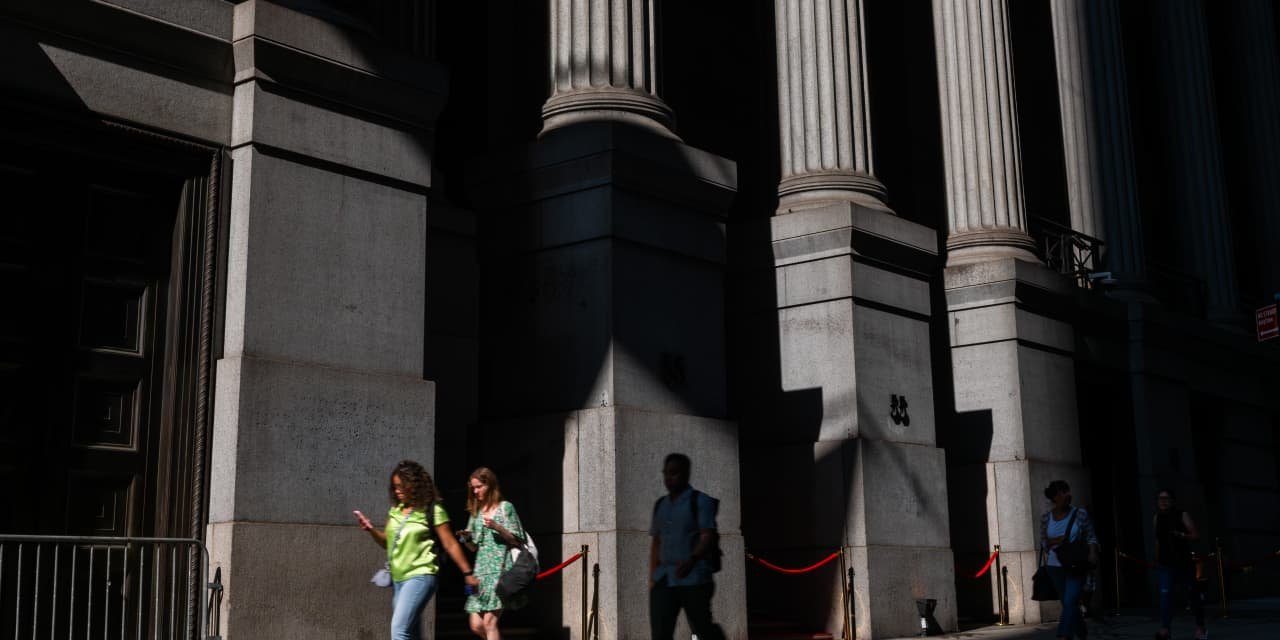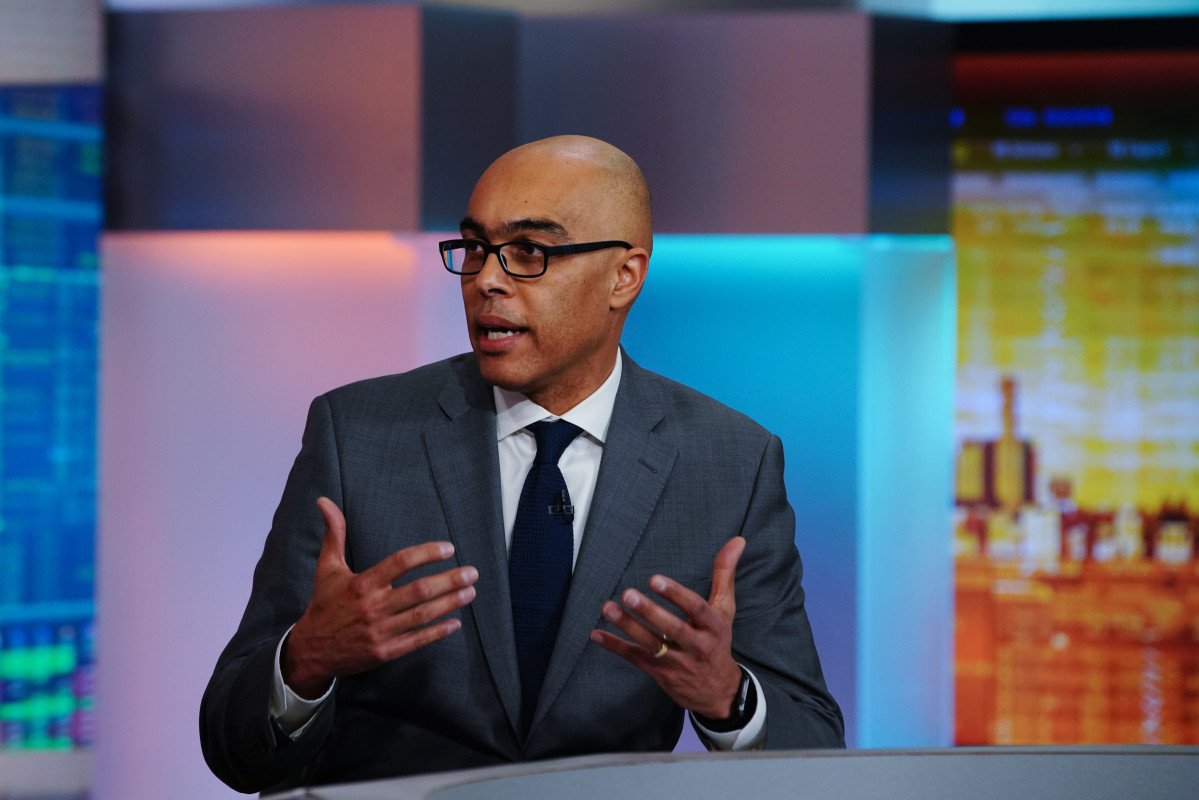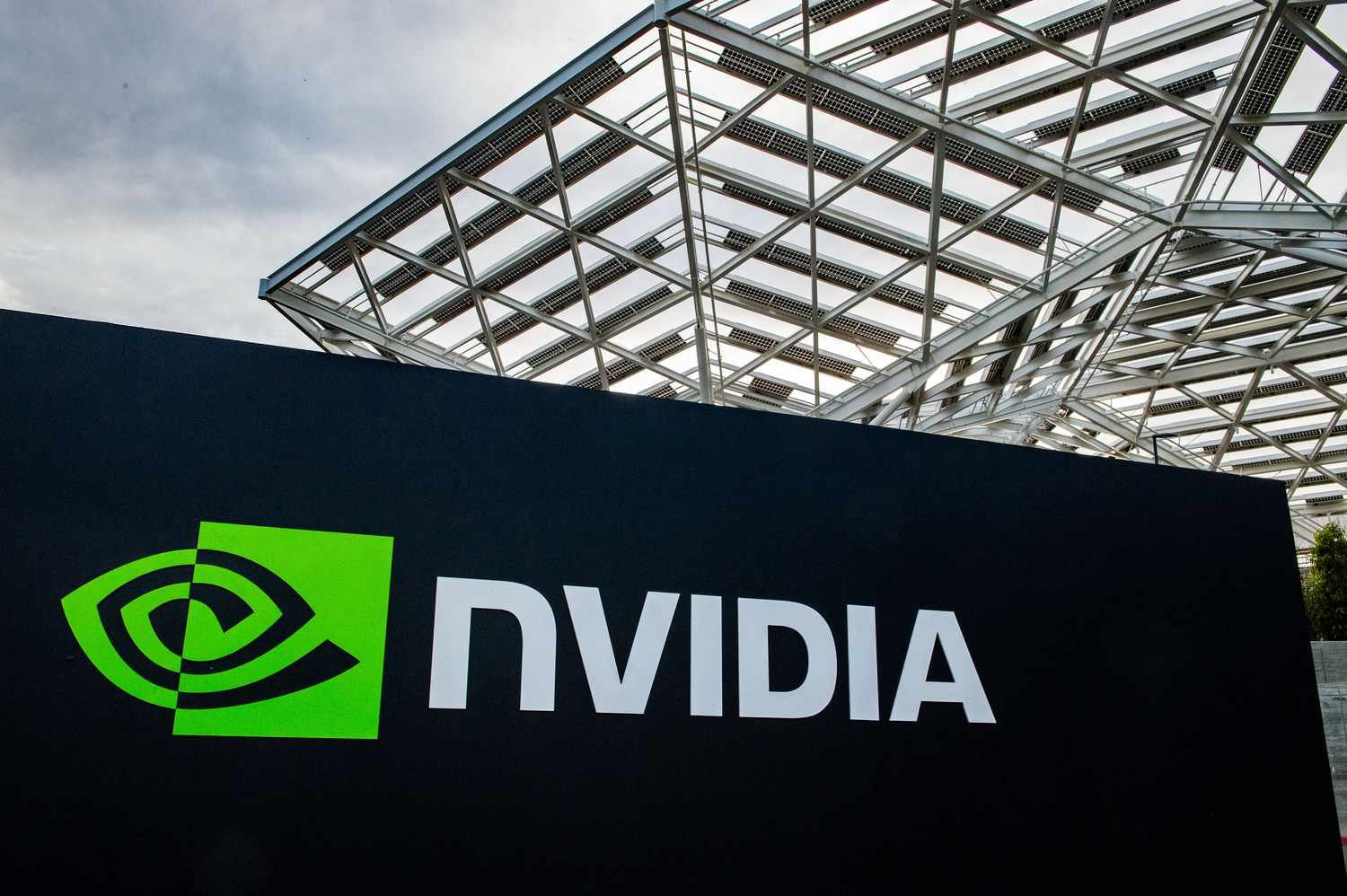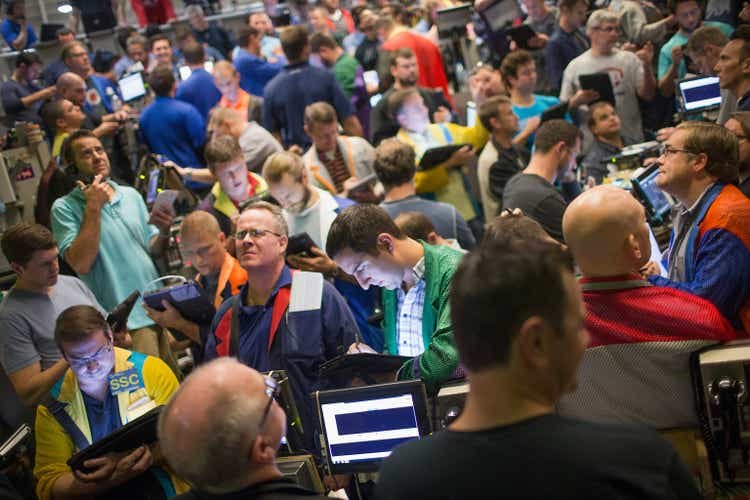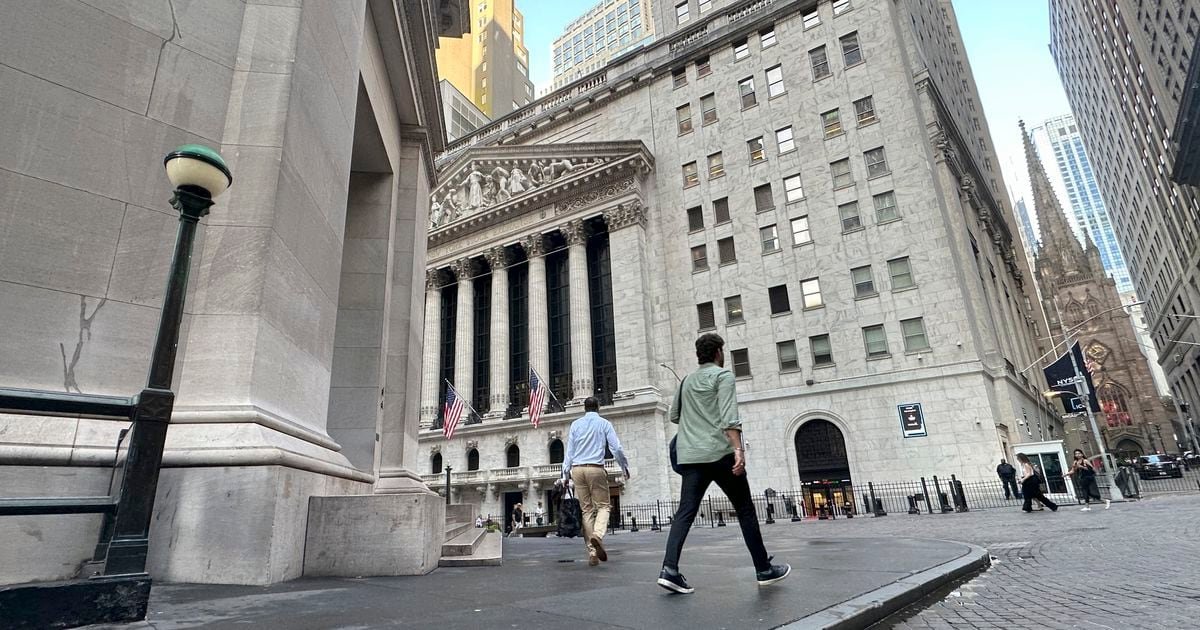Latest Updates
U.S. stocks ended higher Friday, with the Dow Jones Industrial Average notching a fresh record peak ahead of Labor Day weekend.
The Dow rose 228.03 points, or 0.6%, to close at 41,563.08.
The S&P 500 climbed 56.44 points, or 1%, to finish at 5,648.40.
The Nasdaq Composite advanced 197.19 points, or 1.1%, to end at 17,713.62.
All three major U.S. stock indexes accelerated their climb approaching the closing bell to finish August with monthly gains.
The Dow rose 1.8% for the month, while the S&P 500 jumped 2.3% and the technology-heavy Nasdaq Composite increased 0.6%, according to Dow Jones Market Data. The Dow and S&P 500 each logged a fourth straight month of gains, as investors on Friday weighed a fresh reading on U.S. inflation that was largely in line with Wall Street’s expectations.
The U.S. stock market will be closed Monday in celebration of Labor Day.
(MarketWatch photo illustration/iStockphoto, Getty Images)
“We continue to have questions about global demands, and on how much impact the shuttering of Libyan supplies will have,” said Gary Cunningham, director of market research at Tradition Energy. He added that, for now, “We think global demands will weaken later in the year.”
West Texas Intermediate crude for October delivery fell $2.36, or 3.1%, to settle at $73.55 a barrel on the New York Mercantile Exchange. The front-month contract ended 1.7% lower for the week and marked a monthly loss of 5.6%, according to Dow Jones Market Data. On its expiration day, October Brent crude, the global benchmark, declined $1.14, or 1.4%, to $78.80 a barrel on ICE Futures Europe, settling 0.3% lower for the week and 2.4% lower for the month.
The Dow Jones Industrial Average was back in positive territory late afternoon Friday, as the U.S. stock market approached the closing bell on the last trading day of August.
The Dow was up 46 points, or 0.1%, at nearly 41,382 and trading in record territory, according to FactSet data at last check. The U.S. stock index, which closed Thursday at an all-time peak of 41,335.05, was on track to book a monthly gain of 1.3%.
The U.S. stock market was mostly up late afternoon Friday, with the Dow Jones Industrial Average trading about flat after closing at a record high on Thursday.
The Dow was up about 2 points, or less than 0.1%, in afternoon trading, according to FactSet data, at last check. The blue-chip U.S. stock index was on pace to rise 0.4% for the week.
The two other major U.S. equity benchmarks were trading in positive territory Friday afternoon, with the S&P 500 up 0.4% and the technology-heavy Nasdaq Composite gaining 0.6%, according to FactSet data, at last check. But both were posting weekly declines.
Shares of Dollar Tree Inc. have tumbled about 11% in two days, toward its lowest close since May 2020, in the midst of the COVID-pandemic panic. That selloff comes after rival Dollar General Corp.’s stock suffered a record one-day plunge following a hugely disappointing quarterly report and outlook.
Dollar Tree is scheduled to release its own second-quarter report on Wednesday, Sept. 4.
But Dollar General isn’t entirely to blame for Dollar Tree’s troubles, as the stock has been selling off for a while. The company said in April that it was looking into a potential sale of its struggling Family Dollar business, which it bought nine years earlier, as its core lower-income customers continue to struggle in the face of inflation and higher interest rates.
Dollar Tree’s stock has dropped for seven-straight sessions. It has tumbled 19.4% in August toward six-month losing streak, which would be the longest such streak since the company went public in March 1995.
The company’s shares have been weighed down by issues including margin pressures, which were highlighted by its recent earnings, as well as the prospect of problems with its financial reporting.
Next up among the August losers are shares of Moderna Inc. and Intel Corp. Moderna is dealing with waning vaccine demand, while Intel faces financial predicaments as it builds out its manufacturing business at a time of struggles in the core business.
The table below shows the index’s other big underperformers for the month.
Small-cap stocks in the U.S. were falling modestly Friday and on track to book a monthly loss.
The Russell 2000 index, which measures the performance of U.S. small-cap equities, was down 0.3% in afternoon trading. That left the index on pace to log a 2.6% decline for August.
Still, the Russell 2000 is up so far in 2024, with a gain of more than 8% based on Friday afternoon trading, according to FactSet data, at last check.
The S&P 500’s 11 sectors were trading mixed Friday afternoon, with gains led by consumer-discretionary stocks.
The consumer-discretionary sector was up 0.6%, while the S&P 500 index at large was rising a slight 0.1%, according to FactSet data, at last check. Information technology had the next biggest gains in the S&P 500 on Friday afternoon, with an increase of 0.2%.
The S&P 500’s worst-performing sector was energy in afternoon trading, down 0.7%, FactSet data show, at last check.
After a rough start to the month, the Roundhill Magnificent Seven ETF’s valiant mid-month rally ran out of steam, to put the ETF on track to suffer back-to-back monthly losses.
The ETF had tumbled 9.2% during the first five sessions of August, to close Aug. 7 at a three-month low, as a broad market selloff stoked fears of a great rotation out of the Mag 7. But then a big 12.1% bounce over the next 10 days took the ETF up to a monthly gain 1.8% as of Aug. 21.
With this week’s 2.8% drop, the ETF is now down 1.7% in August, after falling 0.4% in July. The ETF hasn’t fallen for two straight months since the three-month streak that ended in October 2023.
Within the ETF, worst performer this month is Tesla Inc.’s stock, down 9.4%. Next is Amazon.com Inc.’s stock, which is shedding 6.2% toward its worst monthly decline since it dropped 7.9% in September 2023.
The best performer is Meta Platforms Inc. stock, which is up 9.1%.
Nvidia Corp.’s high-grade bonds are a buy, given that the artificial-intelligence juggernaut has less than $8.5 billion in debt and plenty of free cash flow, which should hold up even if growth slows significantly.
That’s the view GimmeCredit analyst Dave Novosel expressed in a note published on Friday.
Even the company’s massive share-buyback program — it added $50 billion to its authorization when it reported this week — is nothing to fret about, Novosel said. That puts Nvidia on track to repurchase about $30 billion in total in fiscal 2024, but that’s only roughly half of the $60 billion GimmeCredit is projecting for Nvidia’s free cash flow.

